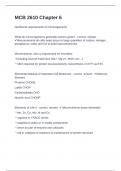, Solutions to end-of-chapter problems
Engineering Economy, 7th edition
Leland Blank and Anthony Tarquin
Chapter 1
Foundations of Engineering Economy
1.1 The four elements are cash flows, time of occurrence of cash flows, interest rates, and
measure of economic worth.
1.2 (a) Capital funds are money used to finance projects. It is usually limited in the amount
of money available.
(b) Sensitivity analysis is a procedure that involves changing various estimates to see if/how
they affect the economic decision.
1.3 Any of the following are measures of worth: present worth, future worth, annual worth, rate
of return, benefit/cost ratio, capitalized cost, payback period, economic value added.
1.4 First cost: economic; leadership: non-economic; taxes: economic; salvage value: economic;
morale: non-economic; dependability: non-economic; inflation: economic; profit: economic;
acceptance: non-economic; ethics: non-economic; interest rate: economic.
1.5 Many sections could be identified. Some are: I.b; II.2.a and b; III.9.a and b.
1.6 Example actions are:
• Try to talk them out of doing it now, explaining it is stealing
• Try to get them to pay for their drinks
• Pay for all the drinks himself
• Walk away and not associate with them again
1.7 This is structured to be a discussion question; many responses are acceptable. It is an
ethical question, but also a guilt-related situation. He can justify the result as an accident; he
can feel justified by the legal fault and punishment he receives; he can get angry because it
WAS an accident; he can become tormented over time due to the stress caused by accidently
causing a child’s death.
1.8 This is structured to be a discussion question; many responses are acceptable. Responses
can vary from the ethical (stating the truth and accepting the consequences) to unethical
(continuing to deceive himself and the instructor and devise some on-the-spot excuse).
Lessons can be learned from the experience. A few of them are:
• Think before he cheats again.
• Think about the longer-term consequences of unethical decisions.
• Face ethical-dilemma situations honestly and make better decisions in real time.
1
, Alternatively, Claude may learn nothing from the experience and continue his unethical
practices.
1.9 i = [(3,885,000 - 3,500,000)/3,500,000]*100% = 11% per year
1.10 (a) Amount paid first four years = 900,000(0.12) = $108,000
(b) Final payment = 900,000 + 900,000(0.12) = $1,008,000
1.11 i = (1125/12,500)*100 = 9%
i = (6160/56,000)*100 = 11%
i = (7600/95,000)*100 = 8%
The $56,000 investment has the highest rate of return.
1.12 Interest on loan = 23,800(0.10) = $2,380
Default insurance = 23,800(0.05) = $1190
Set-up fee = $300
Total amount paid = 2380 + 1190 + 300 = $3870
Effective interest rate = (3870/23,800)*100 = 16.3%
1.13 The market interest rate is usually 3 – 4 % above the expected inflation rate. Therefore,
Market rate is in the range 3 + 8 to 4 + 8 = 11 to 12% per year
1.14 PW = present worth; PV = present value; NPV = net present value; DCF = discounted cash
flow; and CC = capitalized cost
1.15 P = $150,000; F = ?; i = 11%; n = 7
1.16 P = ?; F = $100,000; i = 12%; n = 2
1.17 P = $3.4 million; A = ?; i = 10%; n = 8
1.18 F = ?; A = $100,000 + $125,000?; i = 15%; n = 3
1.19 End-of-period convention means that all cash flows are assumed to take place at the end of
the interest period in which they occur.
1.20 fuel cost: outflow; pension plan contributions: outflow; passenger fares: inflow;
maintenance: outflow; freight revenue: inflow; cargo revenue: inflow; extra bag charges:
Inflow; water and sodas: outflow; advertising: outflow; landing fees: outflow; seat
preference fees: inflow.
2
, 1.21 End-of-period amount for June = 50 + 70 + 120 + 20 = $260
End-of-period amount for Dec = 150 + 90 + 40 + 110 = $390
1.22 Month Receipts, $1000 Disbursements, $1000 Net CF, $1000
Jan 500 300 +200
Feb 800 500 +300
Mar 200 400 -200
Apr 120 400 -280
May 600 500 +100
June 900 600 +300
July 800 300 +500
Aug 700 300 +400
Sept 900 500 +400
Oct 500 400 +100
Nov 400 400 0
Dec 1800 700 +1100
Net Cash flow = $2,920 ($2,920,000)
1.23
1.24
3






